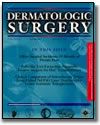When one liter does not equal 1000 milliliters: implications for the tumescent technique.

Dermatologic Surgery
2000 Abstract
0011-1024 Coleman
Coleman WP 4th, Flynn TC, Coleman KM.
Dermatol Surg. 2000 Nov;26(11):1024-8. PMID: 11096388
Department of Dermatology, Tulane University School of Medicine, New Orleans, Louisiana 70112-2699, USA.
BACKGROUND:
Tumescent anesthesia has revolutionized the practice of liposuction.
Inherent to the tumescent technique is the use of large volumes of dilute
solutions of lidocaine with epinephrine instilled into subcutaneous fat
deposits. Precise formulation of the tumescent anesthesia is essential to
liposuction technique.
OBJECTIVES:
To determine the actual volumes of fluids
contained in intravenous (IV) 1 L bags of saline used for tumescent anesthesia,
to calculate volumes supplied in 50 cc stock solutions of 1% lidocaine, and to
measure the amount of fluid retained by peristalic pump tubing used for
infiltration.
METHODS:
The amount of saline contained in fifteen 1 L saline bags
from three different manufacturers was calculated using graduated cylinder
methodology. The volume of tumescent anesthesia retained by peristaltic pump
tubing was calculated by expelling the contents of the filler tubing and
measuring it. The actual amount of 1% lidocaine contained within fifteen 50 ml
"stock" 1% lidocaine bottles from different manufacturers and with different lot
numbers was calculated by transferring the contents into graduated cylinders.
RESULTS:
One liter IV bags of physiologic saline contained an average volume of
1051 ml (range 1033-1069 ml). The 50 ml bottles of 1% lidocaine with epinephrine
contain an average of 54 ml of anesthetic (range 52.5-55 ml). Infusion tubing
for use with peristaltic pumps may retain 46-146 ml of tumescent anesthesia.
CONCLUSION:
One liter IV bags of normal saline contain more than 1 L, having an
average volume of 1051 ml. Common methods of preparation of 0.05% lidocaine with
1:1,000,000 epinephrine and sodium bicarbonate can increase the total amount of
fluid in the tumescent anesthesia to 1112 ml for 0.05% solutions and preparation
of a 0.1% solution contains an average volume of 1162 ml. The fluid contained in
each bag may be increased over labeling by as much as 11-16%. Final
concentrations of lidocaine in tumescent anesthesia may be reduced due to extra
fluids. A 0.05% lidocaine solution may have a final lidocaine concentration of
0.045% and a 0.1% lidocaine solution may have an actual concentration of 0.086%.
Lidocaine concentrations may be reduced by as much as 10-14%. Extra anesthesia
fluid is also contained within stock 50 ml bottles of 1% lidocaine. Dermatologic
surgeons should be aware of extra fluid possibly contained within tumescent
anesthetic preparation, be aware of the extra anesthesia supplied in standard 1%
lidocaine bottles, and possible decreased concentration of lidocaine within the
final tumescent anesthesia.
